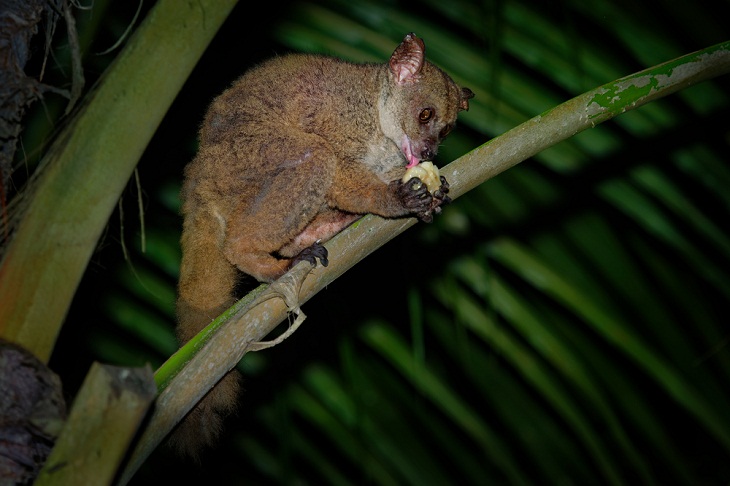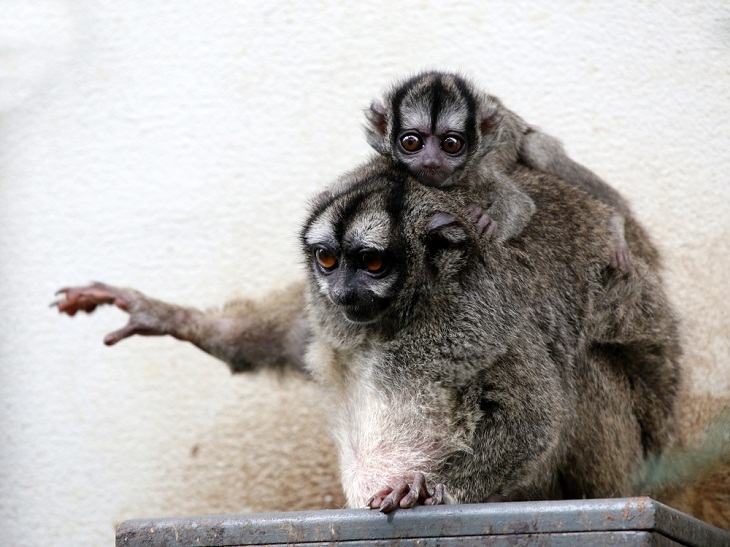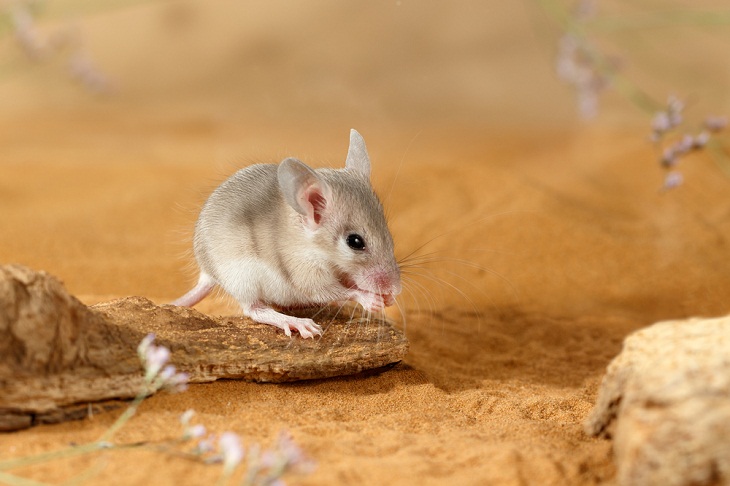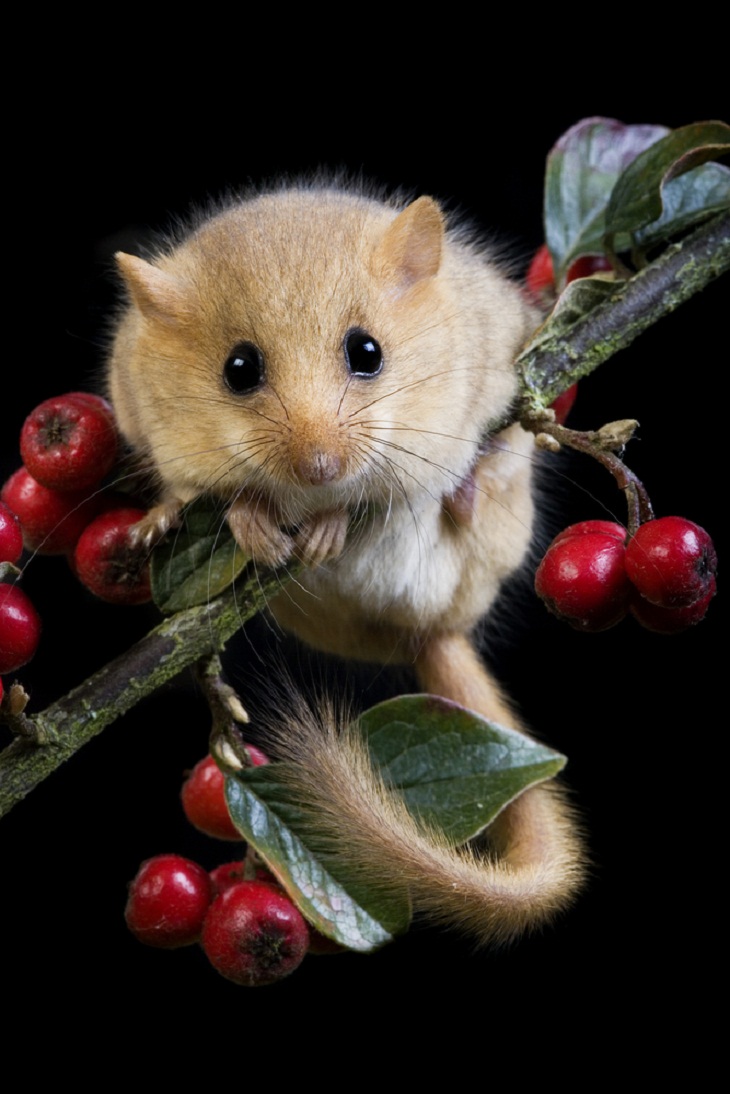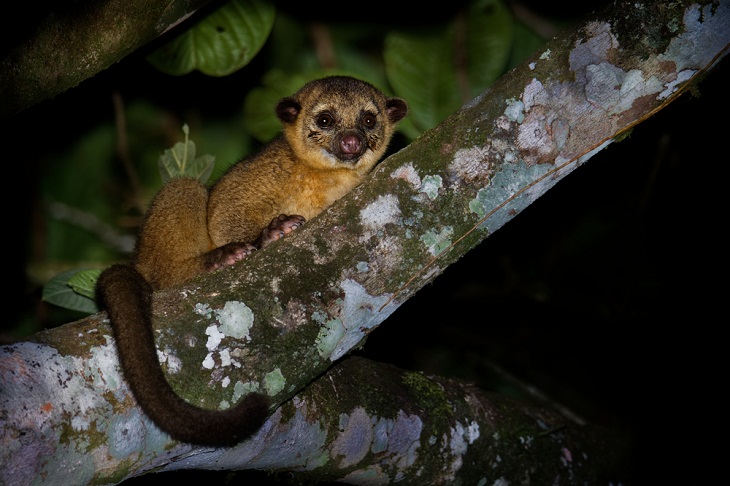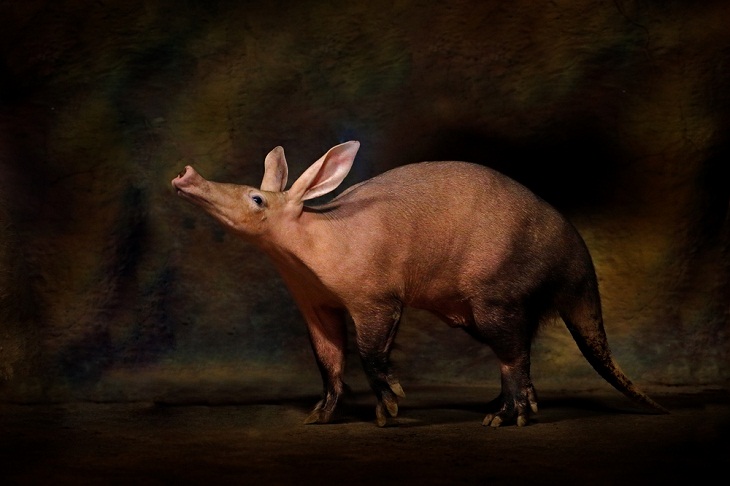The small-eared Galago, scientifically known as Galago moholi, is a fascinating primate that calls Africa it's home. Commonly referred to as the bush baby, this diminutive mammal captivates with its unique characteristics and impressive abilities. Standing at an average height of around 11 inches and weighing merely two pounds, the Small-eared Galago might be small in size, but it compensates with its exceptional vertical leaping prowess. Astonishingly, these agile creatures can effortlessly launch themselves up to an astonishing height of six feet, making them true masters of the aerial domain. This remarkable feat is made possible by their specialized leg muscles and long, slender limbs, which provide them with the necessary power and leverage for their impressive jumps.
2. Night Monkey
Night monkeys, also known as owl monkeys or douroucoulis, are captivating creatures that inhabit the dimly lit rainforests of Central and South America. Unlike most primates, these arboreal wonders have adapted to lead a predominantly nocturnal lifestyle, navigating the dense canopy under the cover of darkness.
Their large, forward-facing eyes are specifically designed to gather the slightest traces of moonlight, enabling them to spot prey and avoid predators in the shadows. With their distinctively haunting calls reverberating through the night, these small, agile monkeys establish tight-knit social bonds and rely on their sharp hearing and an acute sense of touch to thrive in their secretive world.
3. Spiny Mouse
Found in the arid regions of Africa and Asia, this small rodent possesses a distinctive feature: its coarse fur is interspersed with sharp spines, serving as a formidable defense against predators. While its prickly exterior is impressive, the spiny mouse's ability to thrive in harsh environments is equally remarkable. It has evolved to conserve water, hydrating primarily from the food it consumes. Furthermore, this resourceful mouse has the extraordinary ability to shed and regrow its skin, a mechanism that helps it heal its wounds and escape predators. The spiny mouse exemplifies nature's ingenuity, adapting to its nocturnal existence with incredible resilience.
4. Dormouse
Dormice, adorable mouse-like rodents inhabiting the woodlands of Africa, Asia, and Europe, are primarily active during the night, exhibiting their characteristic cuteness. These tiny creatures often scurry along tree branches, foraging for a diverse diet consisting of fruits, flowers, nuts, and insects. While dormice are nocturnal, their nighttime activity is limited to a brief period, as they are known to hibernate for extended durations, sometimes up to half a year. These charming creatures can reach lengths of up to 8 inches at their largest, while the smallest individuals measure a mere 2 inches.
5. Kinkajou
The kinkajou, commonly called the "honey bear," is indigenous to Central and South America. Despite its charming nature, this captivating creature remains elusive to human observation due to its strictly nocturnal behavior. Under the cover of darkness, it gracefully ascends trees in search of nourishment, where it has a particular fondness for delectable fruits such as figs. While the desire to witness this enchanting species in its natural habitat is common among many, encountering the kinkajou proves to be a rare occurrence as it roams the treetops exclusively at night.
6. Sugar Glider
The sugar glider, a small gliding possum, is a fascinating creature of the night. Known for its preference for sugary foods and ability to glide through the air like a flying squirrel, this omnivorous and arboreal mammal rarely ventures to the ground.
A distinguishing characteristic of this creature is its flexible patagium, a soft membrane extending between its wrists and ankles. This unique adaptation allows it to navigate between trees with elegance and ease. These agile "wrist-winged gliders" can effortlessly traverse distances almost as wide as a football field. Their remarkable aerial skills are enhanced by their wide field of vision, which helps judge distances and glide ratios. With careful adjustments of their hands, arms, and bushy tails, sugar gliders expertly maneuver toward their intended destinations in the treetops.
7. Bat-eared Fox
The bat-eared fox, a small fox native to Africa, is instantly recognizable for its disproportionately large ears, exceeding 5 inches (13 centimeters) in height. These oversized appendages play a vital role in maintaining the fox's temperature, allowing it to dissipate heat through an intricate network of blood vessels. These colossal ears also contribute to the fox's exceptional hearing, enabling it to detect even beetle larvae hatching from dung balls with remarkable accuracy.
Survival is an art for these foxes, who rely on their unparalleled agility and speed to outsmart predators. Their remarkable ability to change course while maintaining a lightning-fast pace leaves would-be attackers confounded.
The bat-eared foxes are predominantly nocturnal, with a staggering 85 percent of their activity taking place under the cover of darkness. As twilight descends, these elusive foxes emerge from their dens, venturing out to forage and hunt throughout the night.
8. Aardvark
The aardvark, an indigenous African mammal, is a medium-sized creature known for its nocturnal, burrowing lifestyle. Occupying diverse habitats across Africa, predominantly below the Sahara, these solitary animals retreat to subterranean burrows during scorching daylight hours, seeking respite from the intense African sun. As dusk descends and temperatures cool, the aardvark emerges to forage for sustenance.
Its name, originating from the Afrikaans language in South Africa, translates to "Earth Pig," alluding to its elongated snout and pig-like physique. Surprisingly, aardvarks emerge as the last remaining members of their animal clan, distinct from their previously presumed relatives such as armadillos and pangolins. Recent studies have unveiled that elephants are their closest living counterparts, establishing a newfound understanding of their evolutionary relationships.

